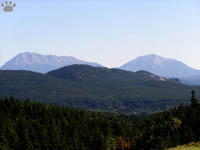
Spanish Peaks, Colorado.
Part 13. The Spanish Peaks
| East from Sangre de Cristo Mountains (one of the
main ranges in Southern Rockies) are Spanish Peaks, two somewhat isolated mountains
rising above the Great Plains. |
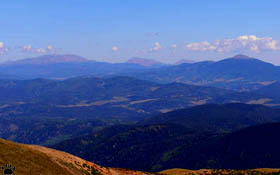
Culebra, Spanish, and Tento Peaks from Wheeler Peak, New Mexico. |
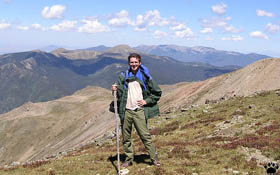
Climbing Western Spanish Peak. |
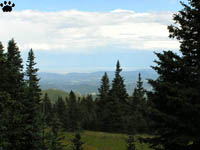
Vew from the Peaks towards the East. |
Looking east from the summits of the Peaks, you
can see the Plains all the way to Oklahoma. To the west are the Rocky Mountains
of Colorado and New Mexico.
|
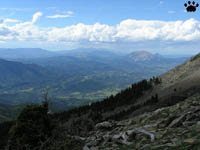
Vew from the Peaks towards the West. |

These large alpine grasshoppers
feed on bighorn sheep dung. |
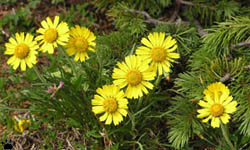
"Old man of the mountain" (Hymenoxys grandiflora),
has flowers up to 12 cm/4.5' wide. |

Willamson's sapsucker (Sphyrapicus
thyroideus), a mountain woodpecker. |

These long granite walls are dykes - stripes of solidified
lava
that had once filled cracks in the Earth's crust. |
It's a good place to study the geology, flora
and fauna of the Colorado Rockies. |
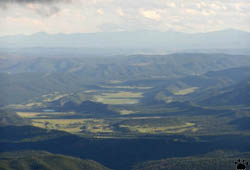
Enclosed valleys are called parks in Colorado, from the
hunters' term "deer park" - a deer wintering area. |
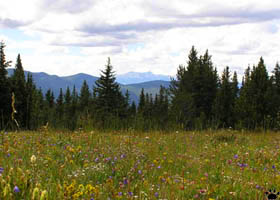
Higher elevations of the Peaks have some of the best alpine meadows
in the Rocky Mountains. |
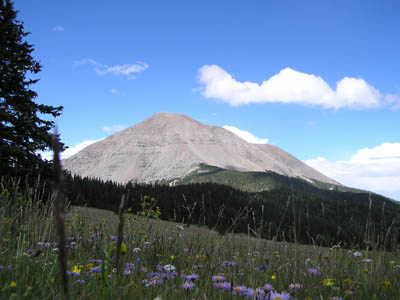
West Spanish Peak (4,100 m/13,626') is the taller and the more
accessible of the two - it takes only 3-4 hours to climb. |

Explorer's gentian (G. calycosa). |
Of all the beautiful flowers growing on alpine
meadows, gentians (Gentiana) are my personal favorites. No other flower genus
has so many wonderful variations of blue color. Gentians occur in all mountains,
meadows, tundras, and unploughed grasslands of the Northern Hemisphere; the Rockies
have their fair share. |
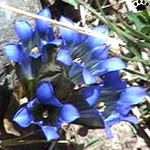
Explorer's gentian (G. calycosa). |
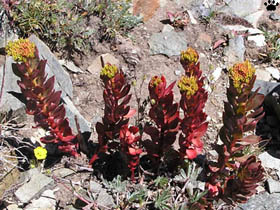 |
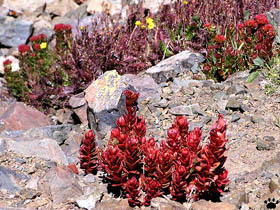 |
| Fall colors of alpine tundras: left
- Rose Crown (Sedum (Rhodiola) rhodanthum), right - King's Crown (S.
(R.) rosea). |
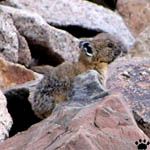
American pika (Ochotona princeps). |

|
High elevation species such as pikas and marmots
are easy to see here. |

|

American pika (Ochotona princeps). |
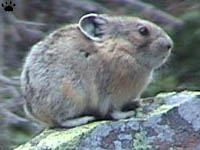
American pika. |
Relatives of rabbits and hares, American pikas
live in talus slopes of Western mountains. They are most interesting to watch
in the fall, when they are busy gathering grass in tiny haystacks for winter. |
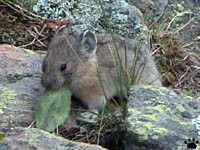
American pika. |
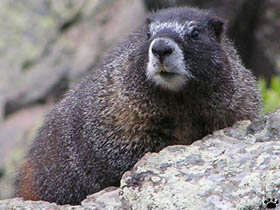 |
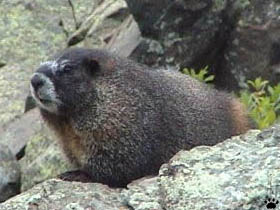 |
| Yellow-bellied marmots (Marmota
ochrogaster). |
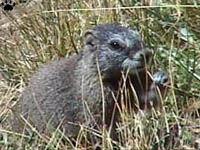
Baby marmot. |
Yellow-bellied marmots, too, look their best in
late summer and early fall, when they fatten up for the hibernation and grow thick
winter coats. Even juveniles play less and feed more at that time. |
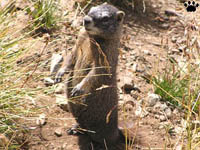
Baby marmot. |
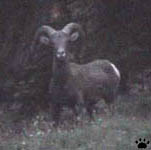
Bighorn (Ovis canadensis). |
A small number of bighorn sheep inhabit the most
remote, rocky slopes of the Peaks. Unlike in many other parts of the Rockies,
here they are shy and difficult to see. They often graze together with marmots
for extra safety: marmots have better eyesight, while bighorns have more acute
hearing and sense of smell. |
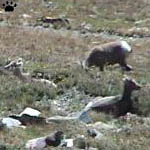
Bighorns and a marmot. |
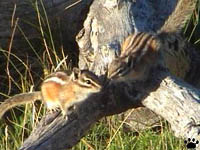 |
 |
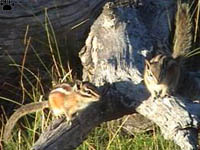 |
| Least chipmunks
(Tamias minimus). |
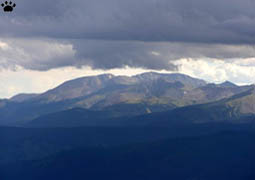
Sangre de Cristo Mountains from the Spanish Peaks. |
As I was climbing the West Peak, the weather began
to change.
|

Sangre de Cristo Mountains from the Spanish Peaks. |
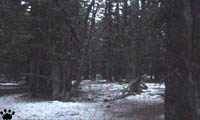
Hail in the forest. |
A sudden thunderstorm brought some rain, hail,
and then snow, but I kept climbing and got to see this beautiful rainbow from
the summit. |

Summit view. |

Mountain cottontais (Sylvilagus nuttallii) are
very common in the forests of the Peaks. |

At sunrise, these rabbits can be seen
sunbathing after a cold night. |
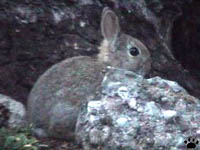
Near timberline they are joined by snowshoe
hares (Lepus americanus). |
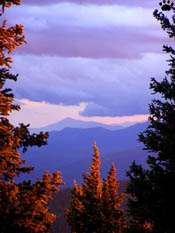 |
The thunderstorm was over in an hour, and I
got back to the forest in time to see this beautiful sunset.
 |
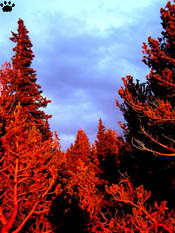 |
| Sunset at Spanish Peaks (colors NOT
artificially enhanced). |

Aerial view of the Peaks in March. |
In winter and spring, snowclad summits of the
Peaks are visible from the Plains up to 200 km eastward. |

Aerial view of the Peaks in March. |
Part 14. The Northern Rockies
Back to Part 12
Home
|